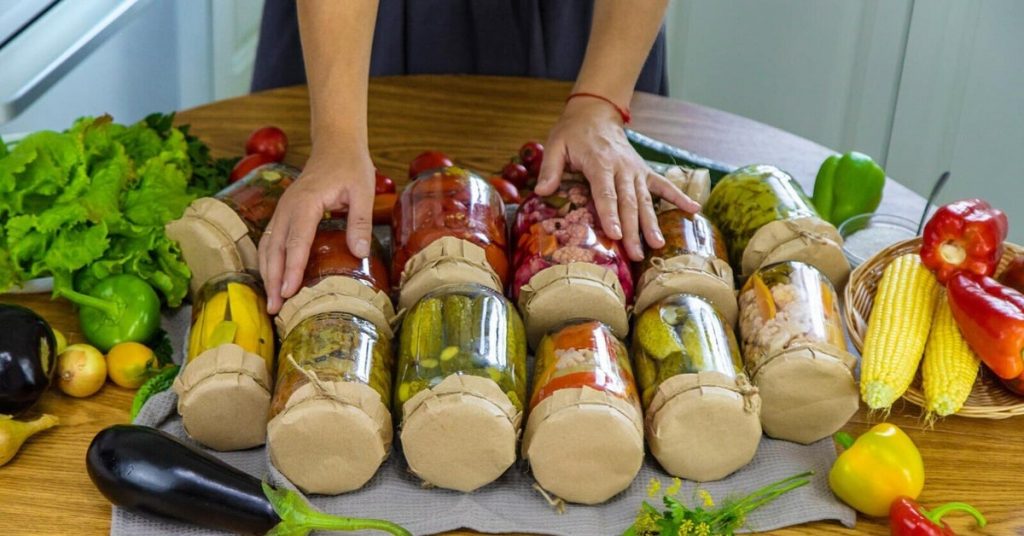
Did you know that fermented foods are packed with probiotics, enhancing both flavor and health? As home cooking evolves, fermentation emerges as a game-changer.
In recent years, the practice of fermentation has surged in popularity among home cooks. This ancient technique, used for preserving food and enhancing flavors, is now being embraced as a newfound frontier in culinary exploration. From tangy sauerkraut to bubbling kombucha, the diversity of fermented foods is vast and inviting. But why has fermentation become such a hot topic? What health benefits do these foods offer? And how can everyday cooks get started with this age-old method? This article delves into the world of fermentation, highlighting its roots and health benefits, offering practical recipes, and showcasing how this trend is reshaping home kitchens across America.
Fermentation is a natural process where microorganisms like bacteria, yeast, or molds convert sugars and starches into acids or alcohol. This process not only preserves food but also enhances its nutritional value. At its core, fermentation relies on the concept of anaerobic environments, where oxygen is limited or absent. This environment allows beneficial bacteria to thrive, outcompeting harmful ones and leading to the transformation of raw ingredients.
Common types of fermentation include lactic acid fermentation seen in yogurt and sauerkraut, alcoholic fermentation used in beer and wine, and acetic acid fermentation that produces vinegar. Each type serves distinct culinary purposes, from enhancing flavor profiles to improving shelf life.
Understanding these fundamentals equips home cooks with the knowledge to experiment with fermentation safely and effectively.
Fermented foods are not only delicious, but they are also beneficial for gut health. They are rich in probiotics, the friendly bacteria that support digestion, boost the immune system, and even improve our mood. Research has shown that incorporating fermented foods into your diet can lead to better gut microbiota, combating issues like bloating and occasional diarrhea.
Additionally, studies indicate that fermented foods may enhance nutrient absorption. For instance, the fermentation process can break down phytates found in grains and legumes, which can inhibit mineral absorption. By consuming fermented versions of these foods, we access more iron, zinc, and magnesium.
In a world where gut health is increasingly prioritized, adding fermented foods can be a simple yet effective way to promote overall wellness. This makes fermentation not just a culinary trend, but a vital health choice.
Diving into fermentation at home is an accessible journey for anyone interested. Begin with simple, beginner-friendly recipes. One of the easiest ways to start is by making sauerkraut. Simply combine shredded cabbage with salt and allow it to ferment in a jar for one to two weeks. You’ll witness firsthand the transformation as it becomes tangy and flavorful.
Another approachable method is fermenting your own yogurt. With just milk and a starter culture, you can create a creamy product that’s perfect for breakfast or as a base for sauces. The key is consistently maintaining a warm environment for the yogurt cultures to thrive.
As you gain confidence, explore more complex ferments like kimchi, kefir, or even pickled vegetables. The experimentation process is part of the fun, as you can adjust spices and ingredients to suit your tastes.
Kombucha has captured the attention of health enthusiasts and casual drinkers alike. This fermented tea is not only refreshing but also revered for its probiotic content. The intricate balance of sweet and tangy flavor comes from a symbiotic culture of bacteria and yeast, often known as a SCOBY. Making kombucha at home involves brewing tea, adding sugar, and allowing the SCOBY to do its work—transforming the mixture into fizzy goodness over a week or two.
Other trendy ferments have also emerged in home kitchens. Fermented hot sauces, beet kvass, and miso are increasingly popular, reflecting a broader trend towards DIY food crafting. These items allow cooks to personalize their tastes and ingredients, ensuring cleaner, preservative-free options. Engaging with these foods not only fosters creativity in the kitchen but also encourages a sustainable, zero-waste approach.
The trends signal a growing appreciation for fermentation as a practice that both honors tradition and embraces innovation.
Once fermentation is complete, proper storage becomes essential to maintain quality and safety. Many ferments can be kept in the refrigerator to slow down the fermentation process, ensuring they don’t become overly sour. For example, sauerkraut stored in an airtight jar can last for months in the fridge, while kombucha can be bottled and stored for a week or two before enjoying.
Another key consideration is how to handle unexpected flavors or textures. For instance, a particularly pungent kimchi can be repurposed in various recipes, adding depth to soups or stir-fries. Fermentation opens up a world of culinary possibilities, enabling home cooks to harness the full potential of their homemade foods.
Labeling jars with dates can help manage freshness, and keeping an eye on the texture and scent will guide decisions about usage. This awareness promotes an understanding of food as a dynamic entity, evolving over time.
The world of fermentation presents an engaging and flavorful opportunity for home cooks. It’s a creative avenue that not only enhances culinary experiences but also promotes wellness. From understanding the basics and reaping health benefits to learning simple recipes and embracing trendy ferments, there’s much to explore and enjoy. As you integrate these practices into your kitchen, you’ll find yourself connected not only to your food but also to the rich history of culinary traditions. Embracing fermentation paves the way for a healthier, tastier lifestyle that celebrates food in its most vibrant form.